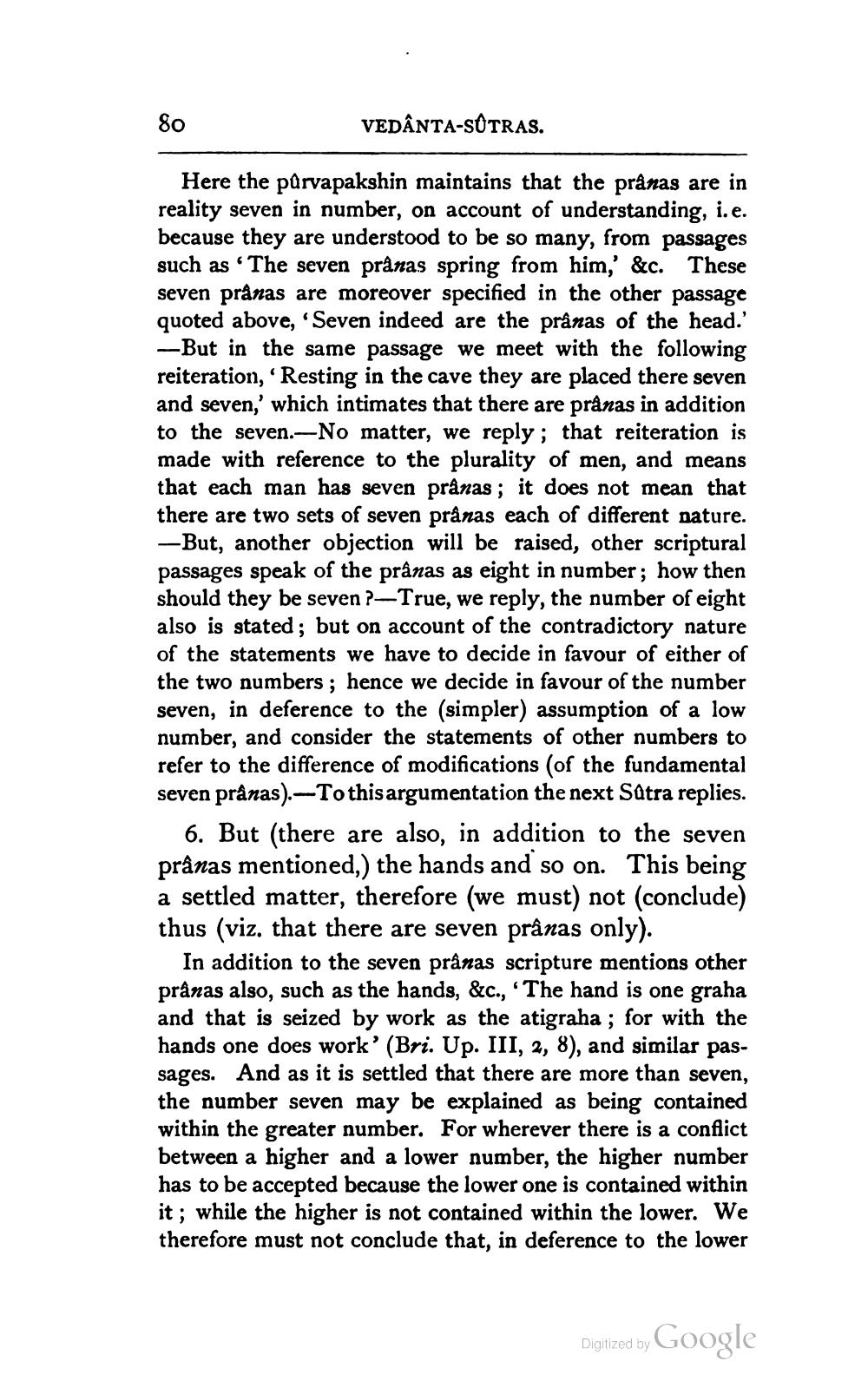________________
VEDANTA-SUTRAS.
Here the purvapakshin maintains that the prânas are in reality seven in number, on account of understanding, i.e. because they are understood to be so many, from passages such as 'The seven prânas spring from him,' &c. These seven pranas are moreover specified in the other passage quoted above, 'Seven indeed are the prânas of the head.' -But in the same passage we meet with the following reiteration, 'Resting in the cave they are placed there seven and seven,' which intimates that there are prânas in addition to the seven.-No matter, we reply; that reiteration is made with reference to the plurality of men, and means that each man has seven prânas; it does not mean that there are two sets of seven prânas each of different nature. -But, another objection will be raised, other scriptural passages speak of the prânas as eight in number; how then should they be seven ?-True, we reply, the number of eight also is stated; but on account of the contradictory nature of the statements we have to decide in favour of either of the two numbers; hence we decide in favour of the number seven, in deference to the (simpler) assumption of a low number, and consider the statements of other numbers to refer to the difference of modifications (of the fundamental seven pranas).-To this argumentation the next Sutra replies.
80
6. But (there are also, in addition to the seven prânas mentioned,) the hands and so on. This being a settled matter, therefore (we must) not (conclude) thus (viz. that there are seven prâzas only).
In addition to the seven prânas scripture mentions other prânas also, such as the hands, &c., 'The hand is one graha and that is seized by work as the atigraha; for with the hands one does work' (Bri. Up. III, 2, 8), and similar passages. And as it is settled that there are more than seven, the number seven may be explained as being contained within the greater number. For wherever there is a conflict between a higher and a lower number, the higher number has to be accepted because the lower one is contained within it; while the higher is not contained within the lower. We therefore must not conclude that, in deference to the lower
Google
Digitized by




